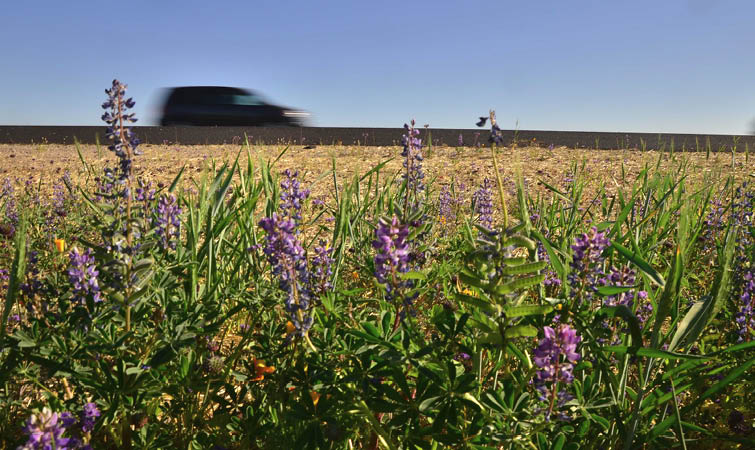ROADSIDE REVEGETATION
An Integrated Approach to Establishing Native Plants and Pollinator Habitat
8.4 Establishing native plants in Arizona
In 1992, Arizona DOT began to use native species in all roadside revegetation efforts. This was implemented by drafting a plant list from State maps of biotic communities grouped by eco-regions. From this list, they identified species that were available commercially. Over the years, available plant mixes included a diversity of 15 to 25 species, composed of annual, biennial, perennial wildflowers, shrubs, and 3 to 5 species of native grasses. After observing that grasses out-competed flowers and even shrubs over time in plantings composed of 50 percent grass and 50 percent wildflowers/shrubs, Arizona DOT scaled back the proportion of grasses to 25 percent. The availability of plant materials, particularly seeds of native species, has increased greatly since 1992.
Arizona is one of the only States to include noxious and invasive species control in construction specifications. In practice, this specification means that noxious and invasive weeds are controlled before, during, and after road construction. By proactively controlling problematic weeds that can outcompete beneficial plants, this practice helps the desired species establish quickly and maintain the long-term integrity of the planting.


Native wildflowers along Arizona's Interstate 10.
Photo credit: Arizona Department of Transportation

